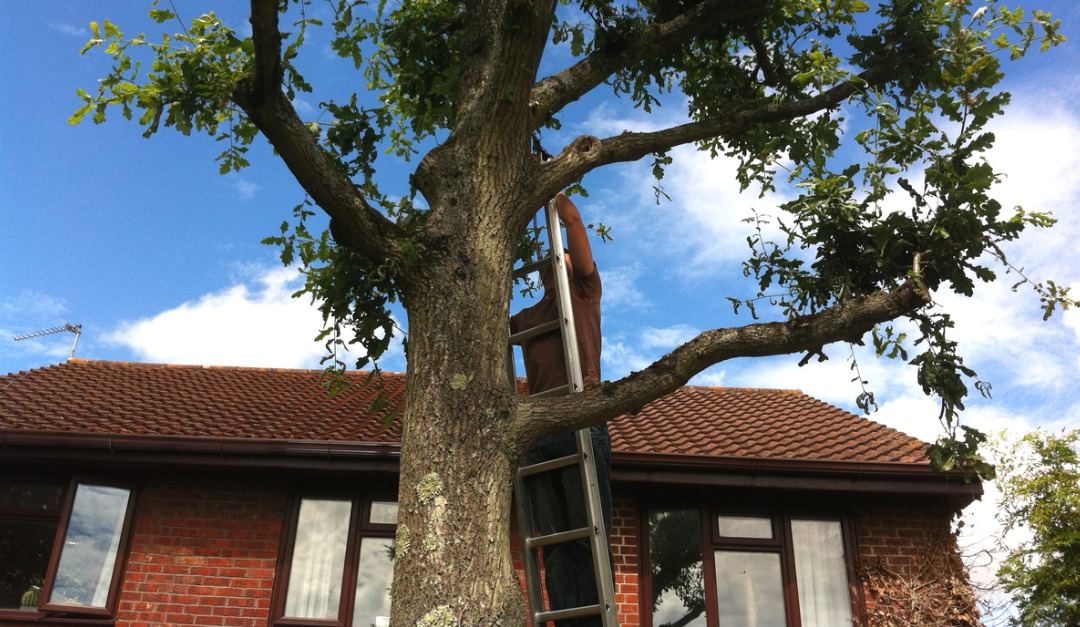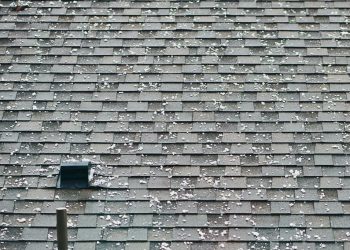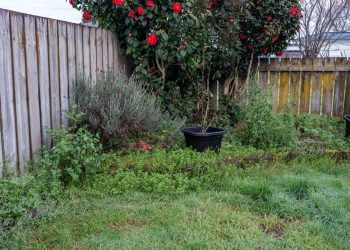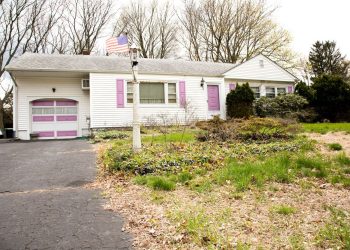Trees and bushes can beautify your yard, but they can cause problems if they’re too close to the house. Some species carry greater risks than others, but you should consider potential problems no matter which species you’re thinking about planting.
Falling Debris
If trees are located next to the house, leaves, twigs and acorns can fall into the gutters, where they can cause clogs. Fallen branches can wind up on the roof and damage shingles or cause gutters to come loose or fall down. A storm can cause large branches to fall, which can result in broken windows, a partial or complete roof collapse, and injuries to the home’s occupants.
Roots
The length of tree roots varies by species, but in many cases the spread of the roots is much greater than the height of the tree. Since the roots are underground, homeowners often have no idea how far they extend.
Roots can damage the foundation, which can result in cracked walls and uneven floors inside the house. Tree roots can also cause a sidewalk or driveway to heave, damage the septic system, and cause pipes to crack or burst, which can lead to major plumbing issues and leaks that can affect the foundation.
Moisture
Trees cause the amount of water in the soil to fluctuate, which can cause the soil to expand and contract. That can create pressure that can crack the foundation or cause it to shift.
Bushes and shrubs retain moisture. If they’re located too close to the house, moisture can cause the exterior of the home to deteriorate, whether it’s made of wood or vinyl siding or another material.
Insects
Moisture can attract insects, including termites. Even though termites usually feast on dead wood or building materials, they sometimes eat the roots of living trees and shrubs. If they find tasty plants near your house, when they’re done with them, they’ll most likely move on to your home. In addition, trees that touch the roof of your house can provide an easy avenue for insects to enter the building.
Think Carefully About Where to Plant Trees and Bushes
Homeowners are often surprised by how much trees and shrubs grow and how they impact the house and other structures. If you’re thinking about planting trees or bushes in your yard, consult an expert to find out how tall they may grow and how far their roots may extend so you can put them in places where they’ll be unlikely to cause damage.
If you already have trees or shrubs near your house, have them trimmed regularly and be on the lookout for signs of plant-related problems. If you notice any of these issues, schedule a professional inspection.











